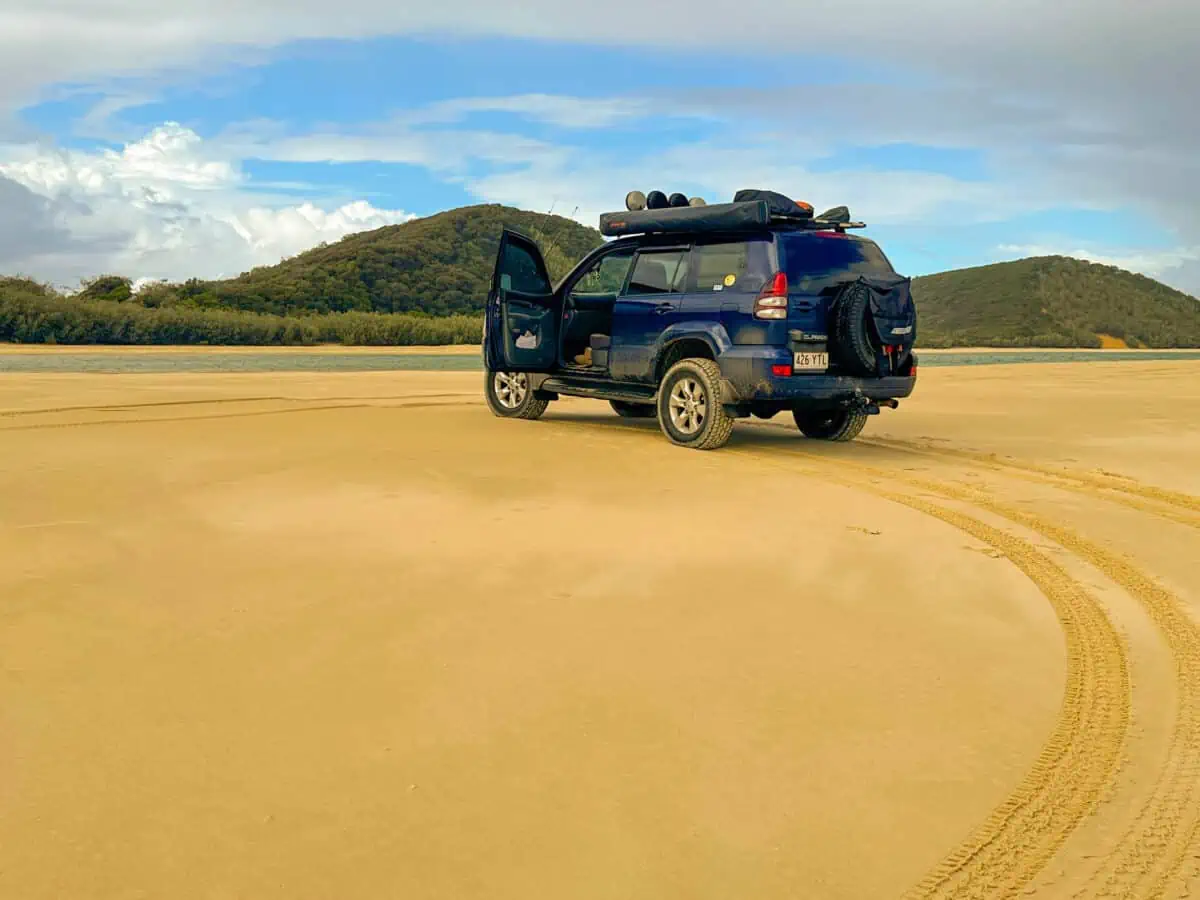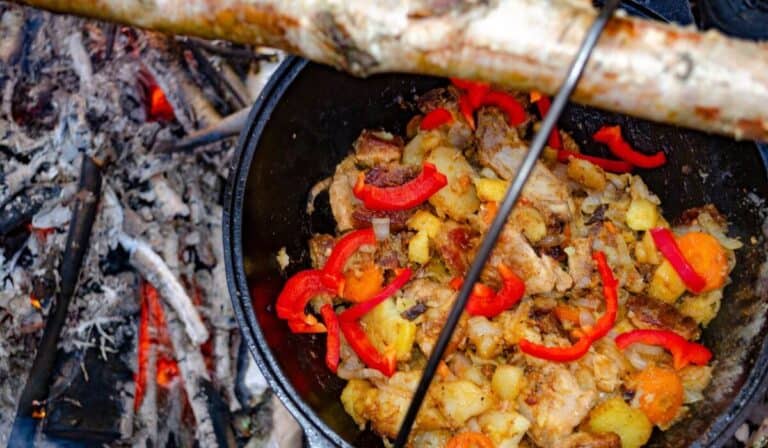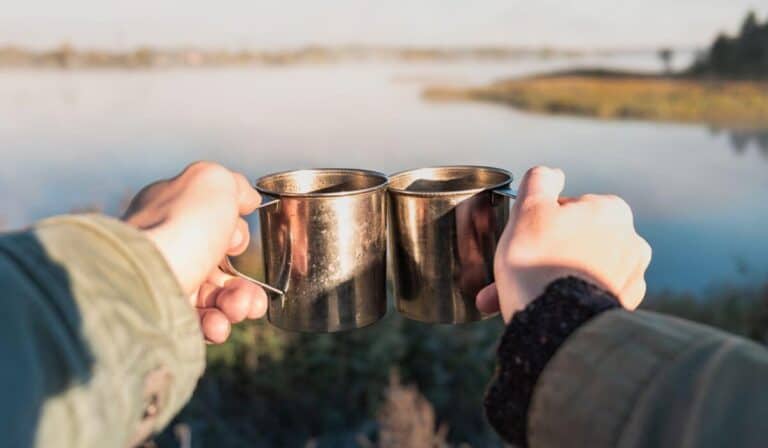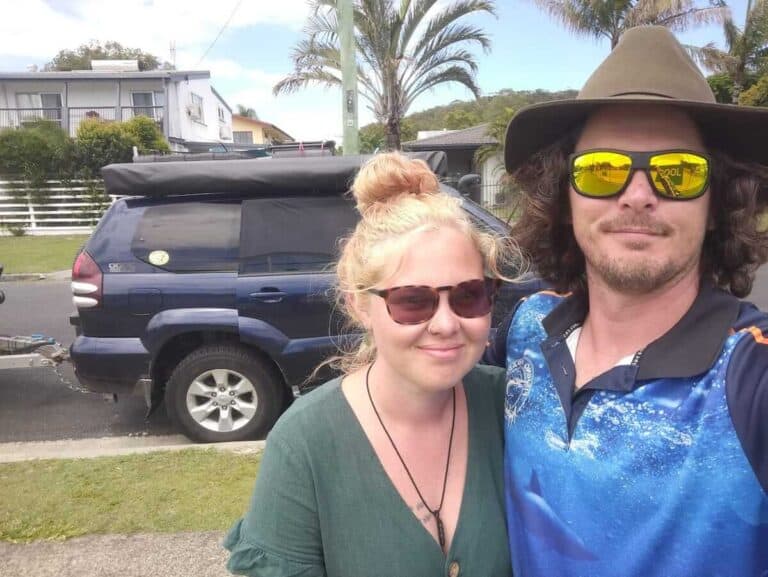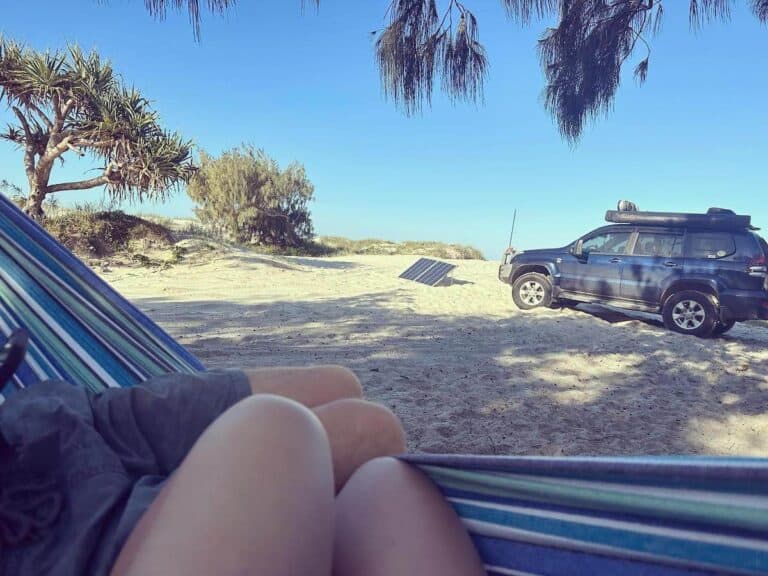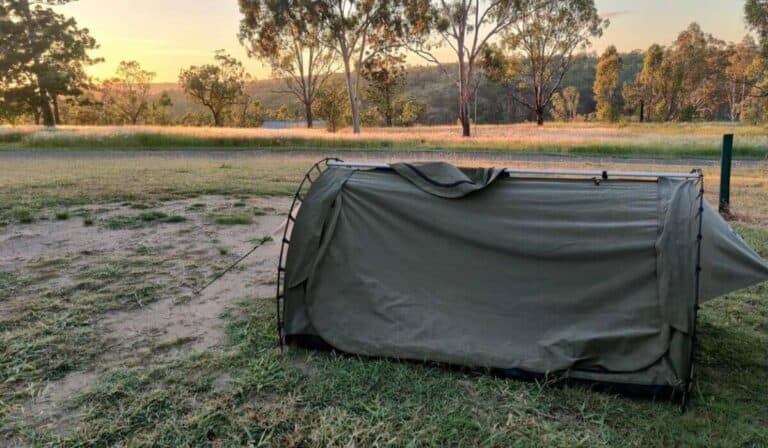Our 16 Must-Have Vehicle Upgrades For Full-Time Travel In Australia
If you’re in the early stages of getting ready for full-time travel in Australia, we’ve got you covered with our list of must-have vehicle upgrades.
A bit of context; a good mate of mine was telling me the other day that he wants to get on the road and travel Australia but didn’t have a clue what vehicle upgrades were required.
We were talking about it and he said he wants an easy to go list with the what and why so he can choose what he thinks he will or won’t need from that.
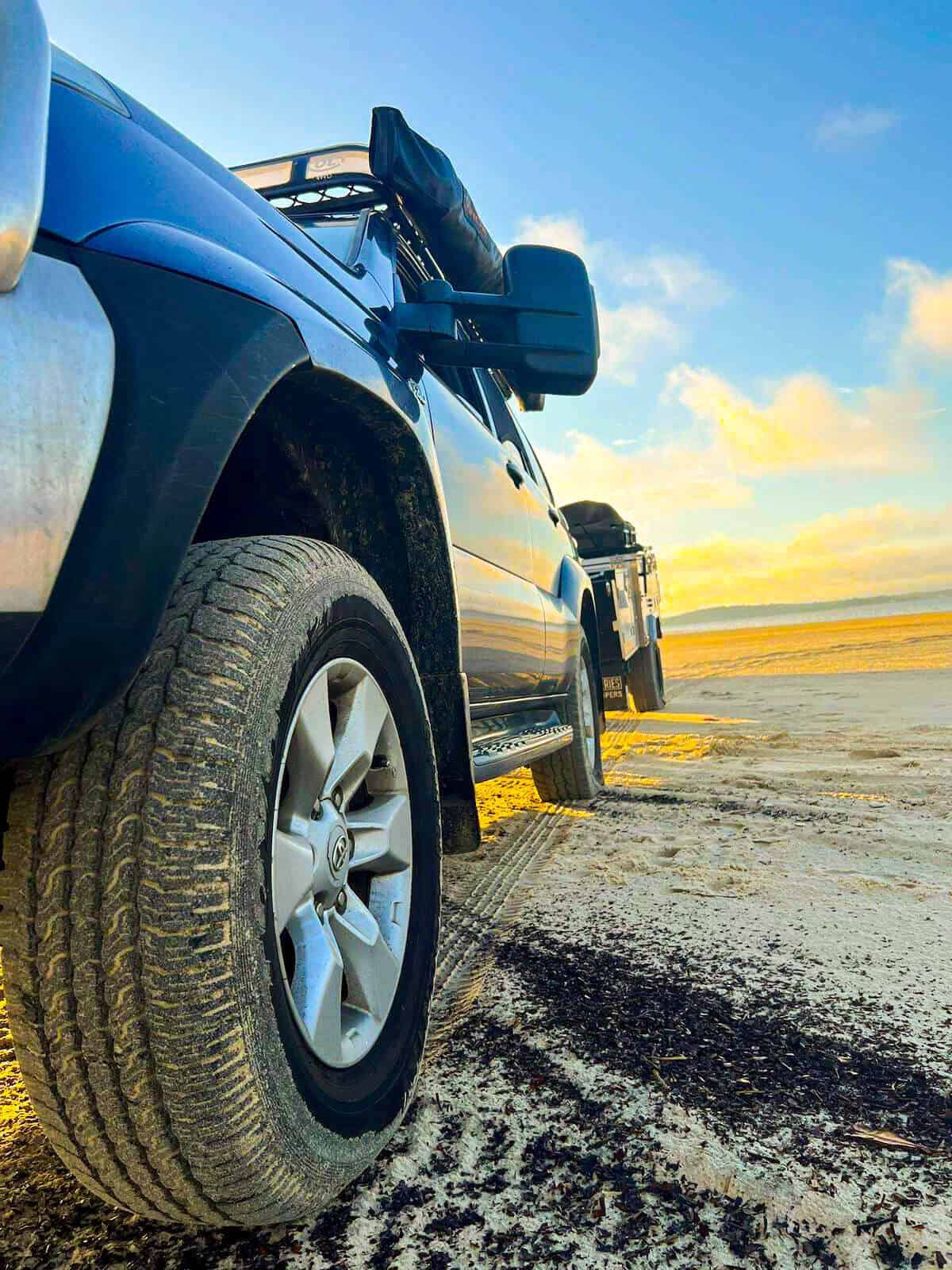
The Must-Have Vehicle Upgrades for Full-Time Travel in Australia
When it comes to full-time travel, it isn’t as easy as jumping in your car and taking off. First you need to consider how you wish to travel Australia. Will you be sticking to bitumen roads and caravan parks or will explore the path less travelled and remote backyards?
Before you start the upgrades, make sure you have a clear picture of what full-time travel looks for you.
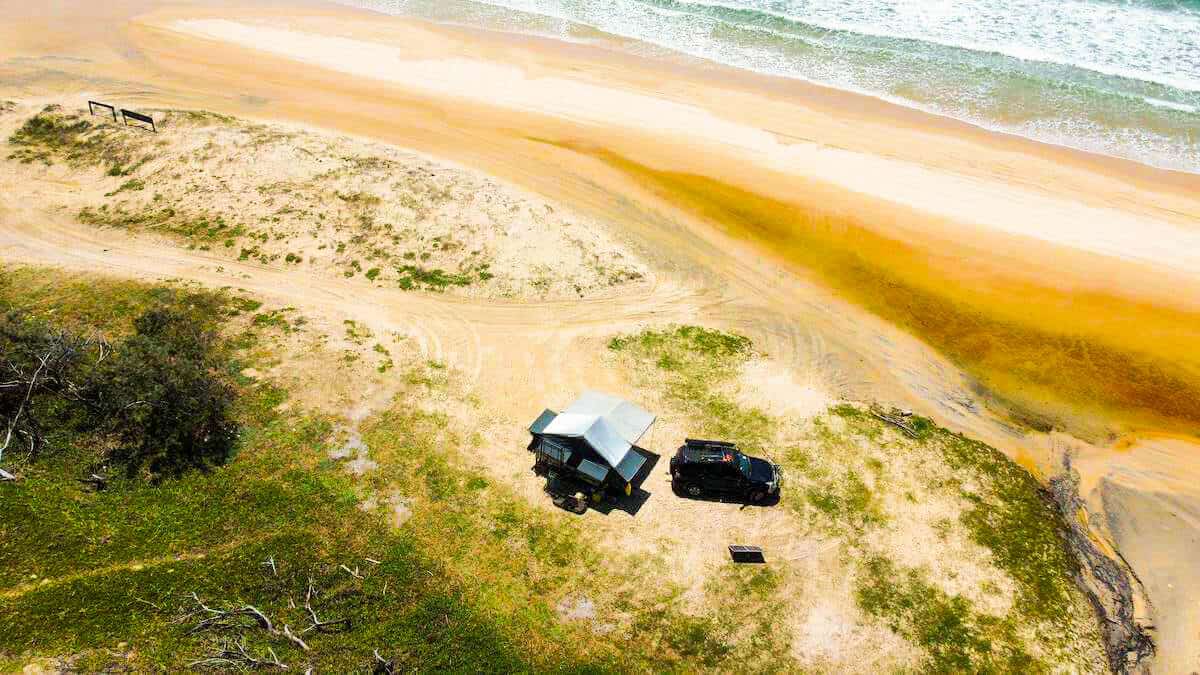
For this reason, what is needed and what is overkill will vary from person to person. Below is what we consider the must-have vehicle upgrades for where we are going and what fit within our budget:
1. Ground Clearance and Tyres
Check with your states allowances firstly as each state differs!
In QLD we are allowed an increase up to 2 inch in suspension and 2 inch in tyres. Anything past this and you will need certification to do so.
For us this is a must. We went to the largest legal tyres for both ground clearance and a wider footprint (more grip) plus a 2 inch suspension lift.
Although most of the way around Australia is on sealed bitumen, the best spots and camp sites are not!
Some of our favourite sites before even getting on the road you need the ground clearance just to get on the property.
This also comes in handy for beach driving. Some of the sand ruts dig down a bit, and if your car is dragging through the sand it is a lot harder on the car and also a higher chance of getting bogged.
Have a chat with your local mechanic (especially one who specialises in suspension) for the best approach for your particular vehicle.
PS – Make sure to start your full-time travel in Australia with new tyres…and don’t forget the spare!
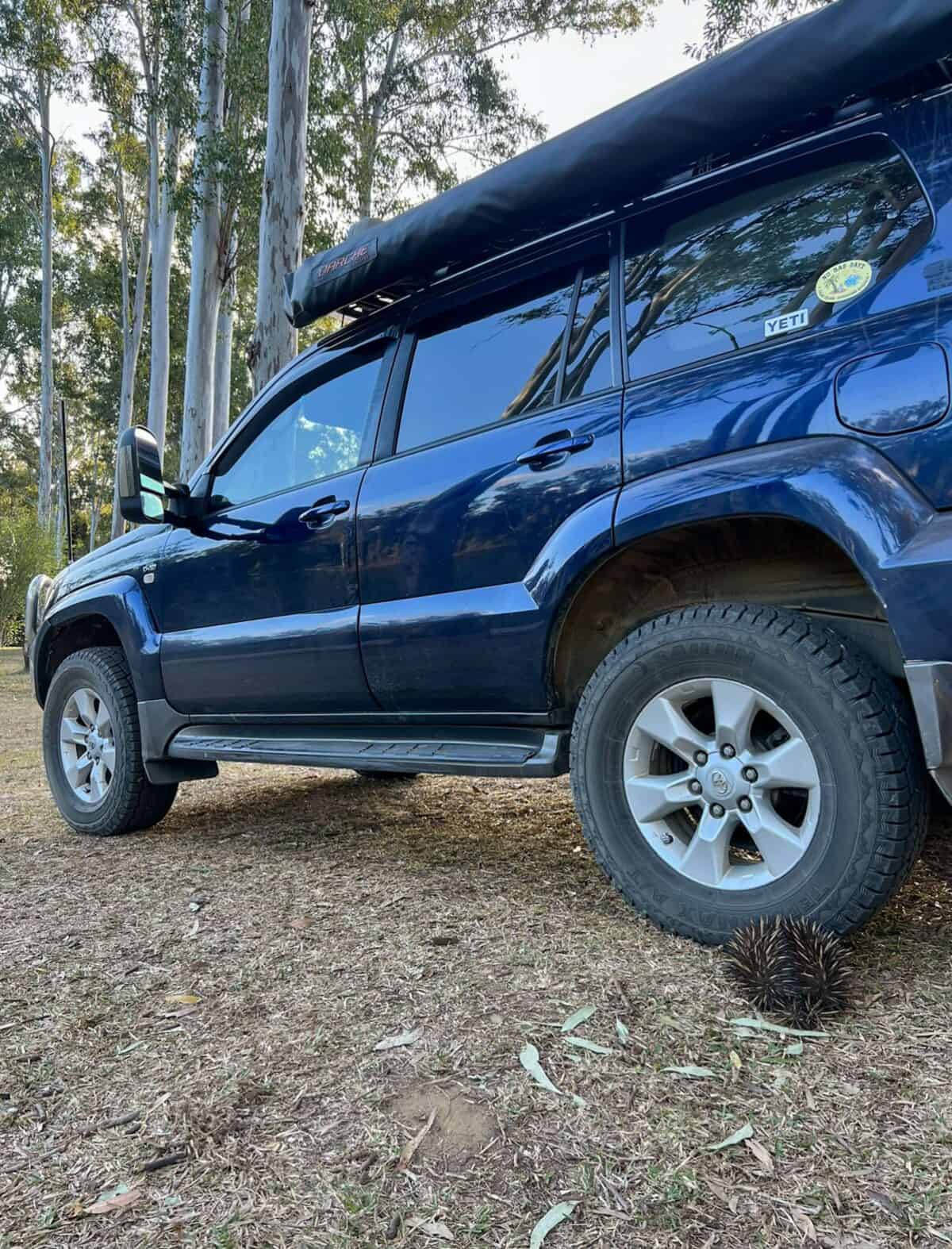
2. Snorkel
If you don’t know what a snorkel is, it’s the best way to receive the cleanest air straight to the engine. Mostly required for water crossings.
If you intend to stick to bitumen, this may not be necessary for you. But if the Cape or off-the-beaten track is on your list, go get the snorkel.
Although it has to be some pretty deep water crossing for this to be necessary, I’d rather have it and not need it than go boom…
Make sure you check the snorkel suits your vehicle make and model before purchasing.
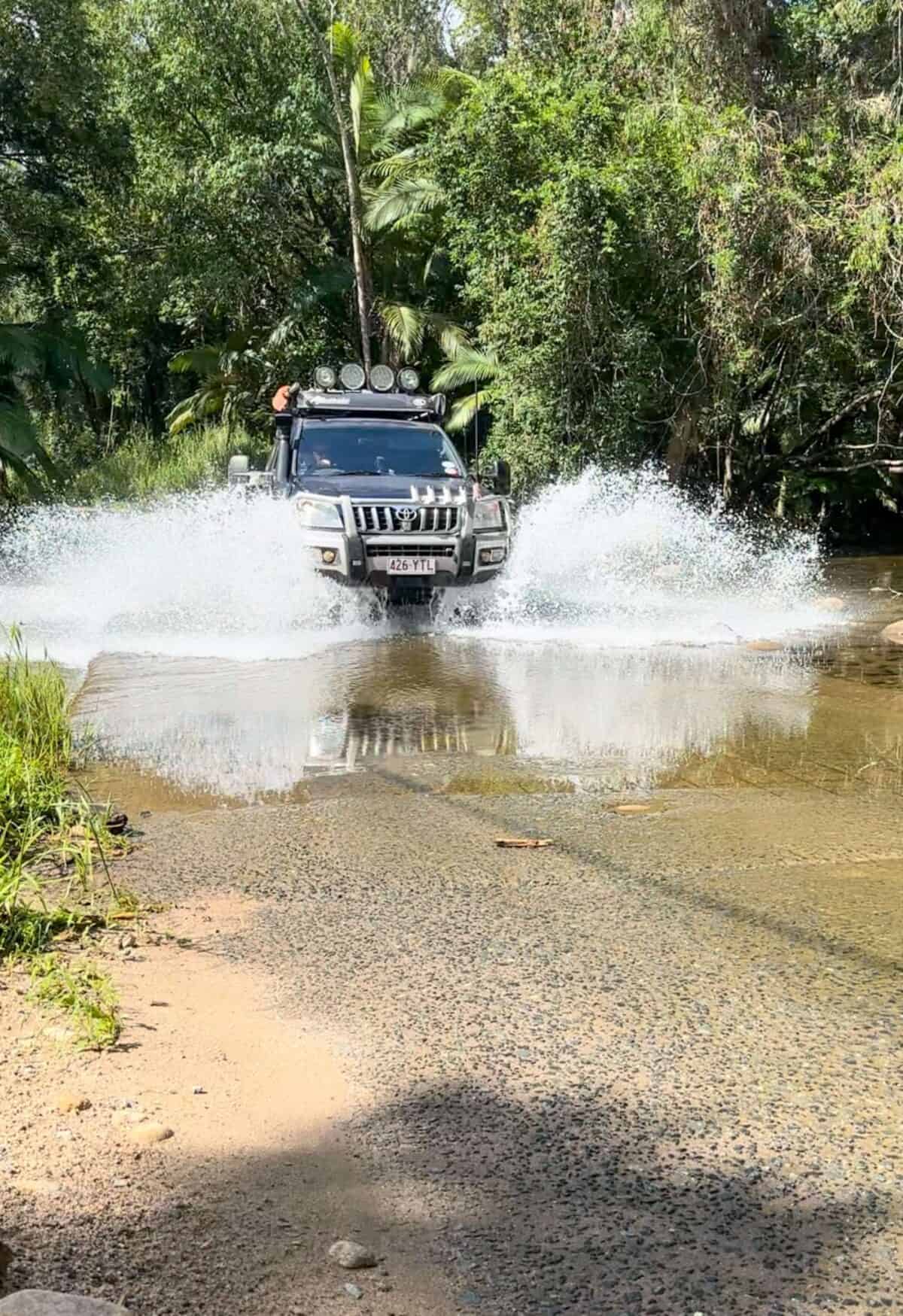
3. Exhaust Upgrade
The factory standard exhausts are absolutely terrible and really don’t let your motor breathe efficiently. This should be on your must-have vehicle upgrades list!
We upgraded ours to a stainless steel 3 inch Turbo Back Exhaust and noticed a good power increase plus some fuel efficiency as well.
Side bonus, it also plays to the boy inside me wanting a car that sounds cool to so win win.
4. Solar and Electrical Setup
Depending on what kind of setup you are going with will depend if this is on the list of must-have vehicle upgrades for you.
As our fridge is run by the car, a full solar and BCDC setup was a must. This also has 2 deep cycles in the car giving us 190Amp hours for auxiliary power.
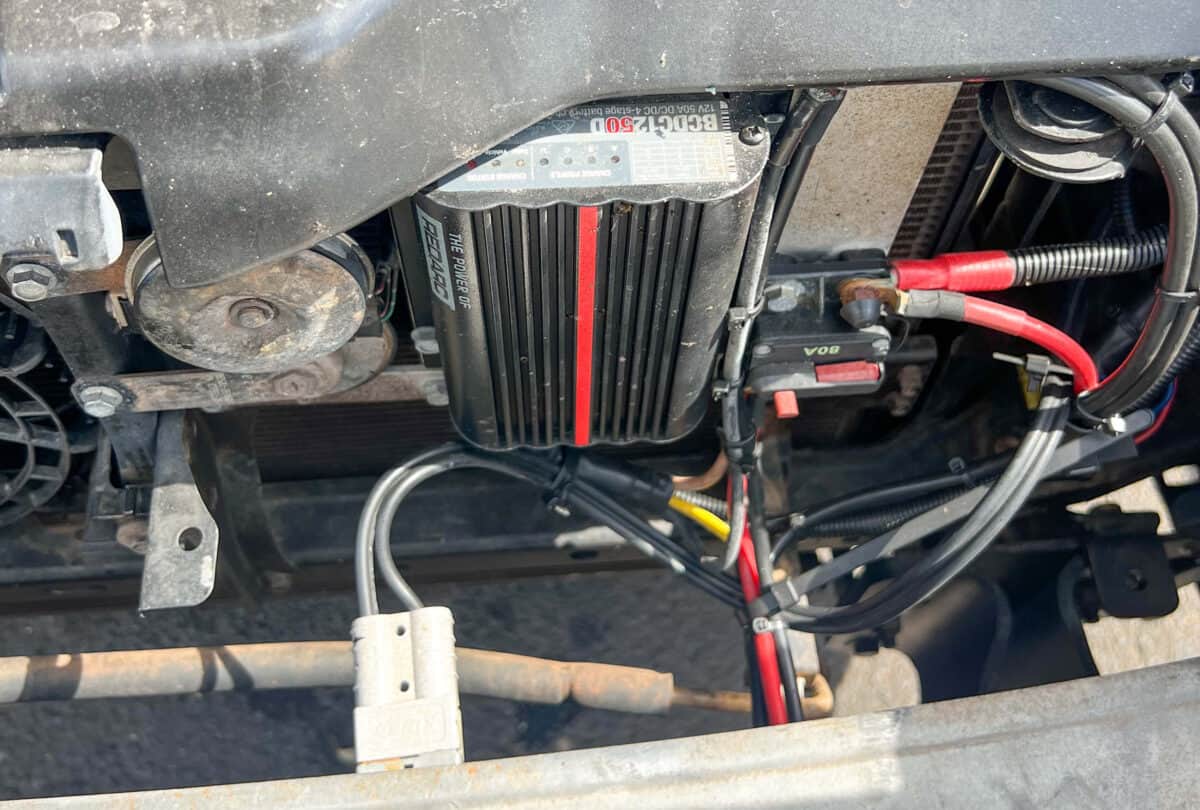
I also think having extra USB points and a volt meter is on the must-have list. After all, we live in the electrical age and everything needs charging!
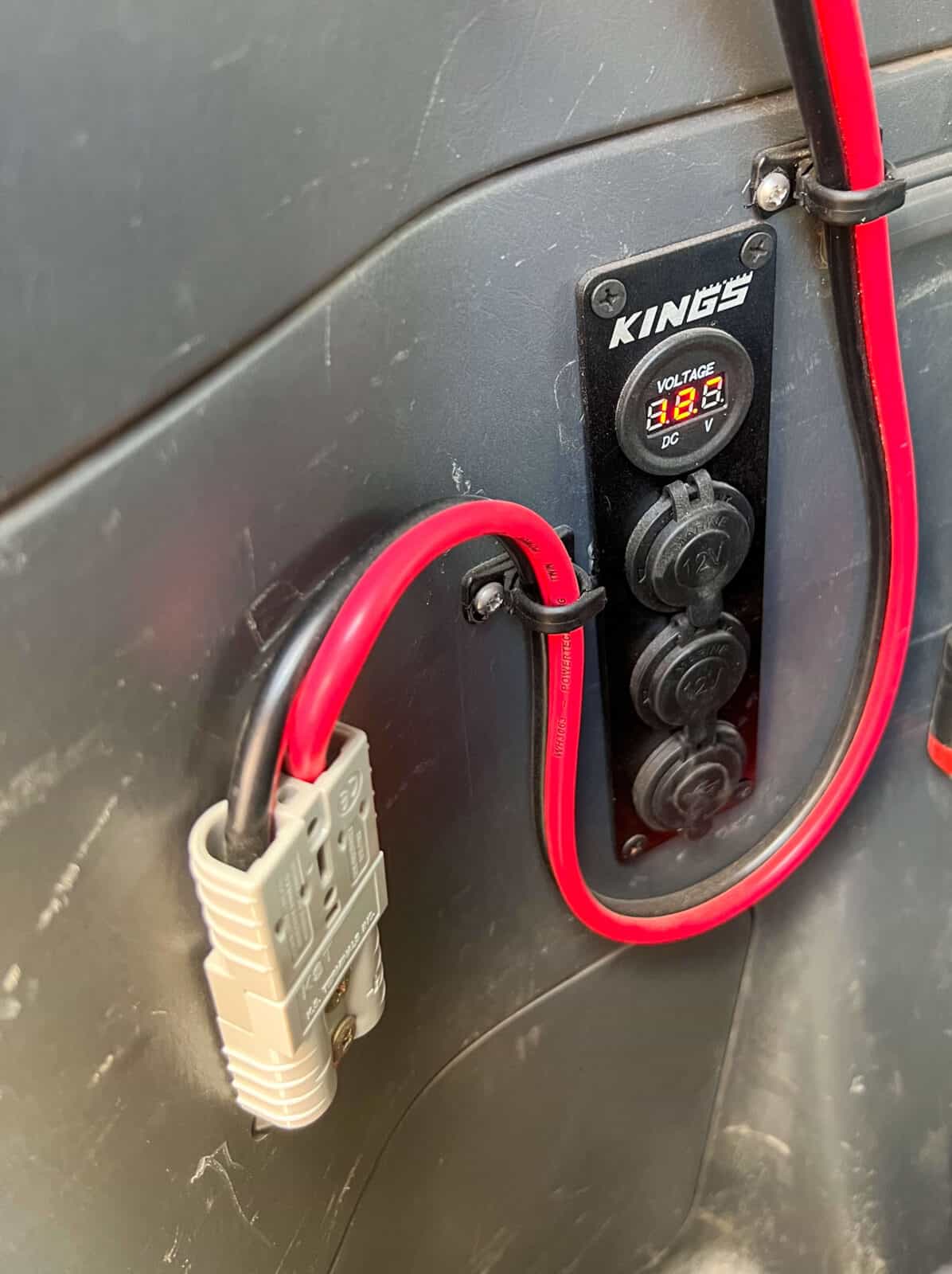
5. High Weighted Car Jack
Your car is no longer going to be half empty, it’s usually going to be 90% full.
Most of those cute little diamond jacks won’t be of any use now. Invest in a good high-weighted bottle jack or you might be stuck for a while.
In 5 months of full-time travel in Australia, we’ve had to use our jack 3 times. Some travellers get lucky and don’t have a flat, but you’d rather have the jack and not need it.
6. Extra Storage
For us, a roof rack was essential for both the solar panel and somewhere else to put the stuff we don’t use often. On this, we also have our long-handled shovel and a dirty bag full of our fossicking gear.
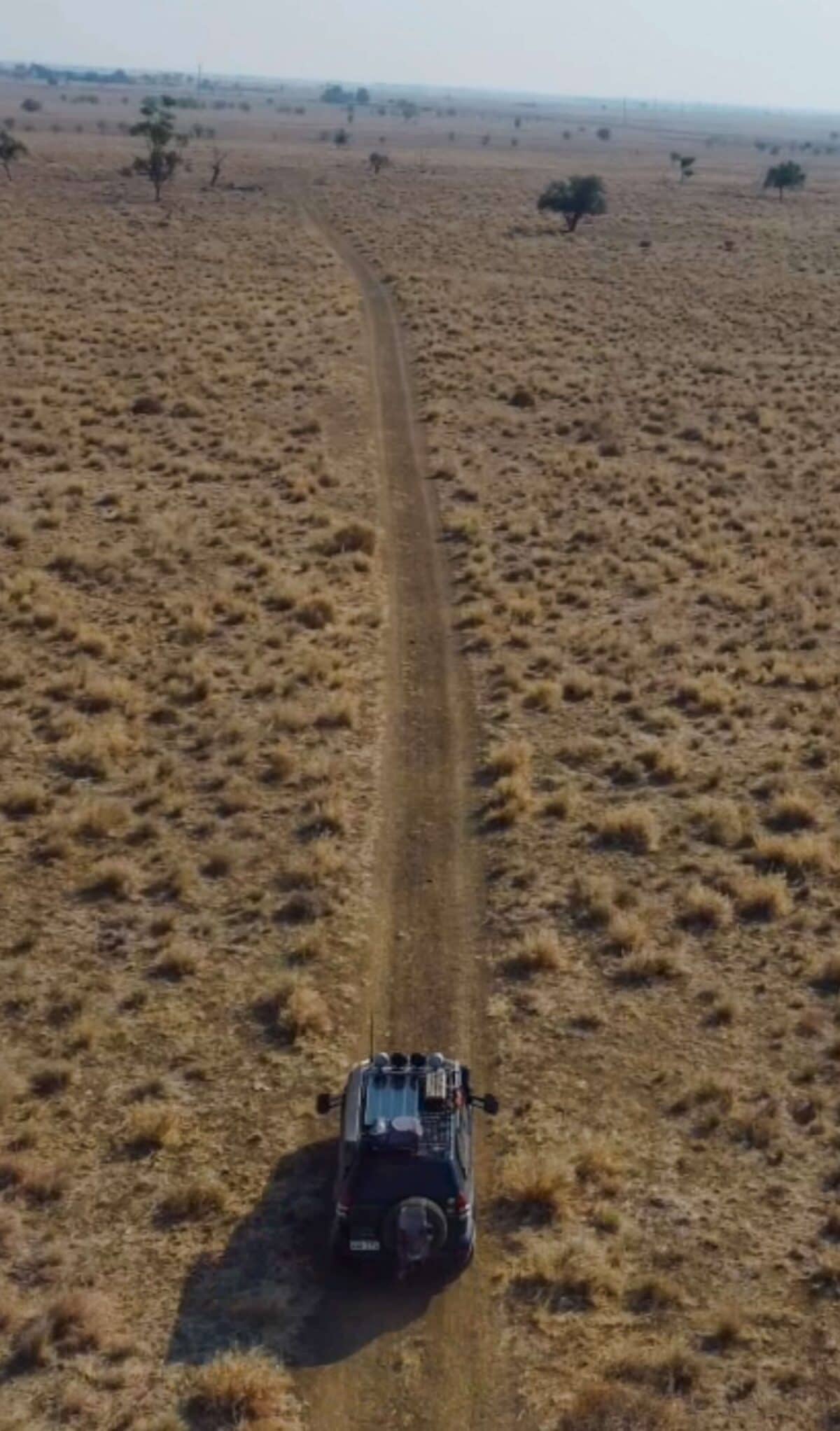
Inside the car we have a roof cargo net to store light things to take up the wasted head space where the back seats used to be.
We also have 3 backseat organisers to help maintain organisation with the smaller items.
The more storage the better organised you will stay rather than just a back seat piled up.
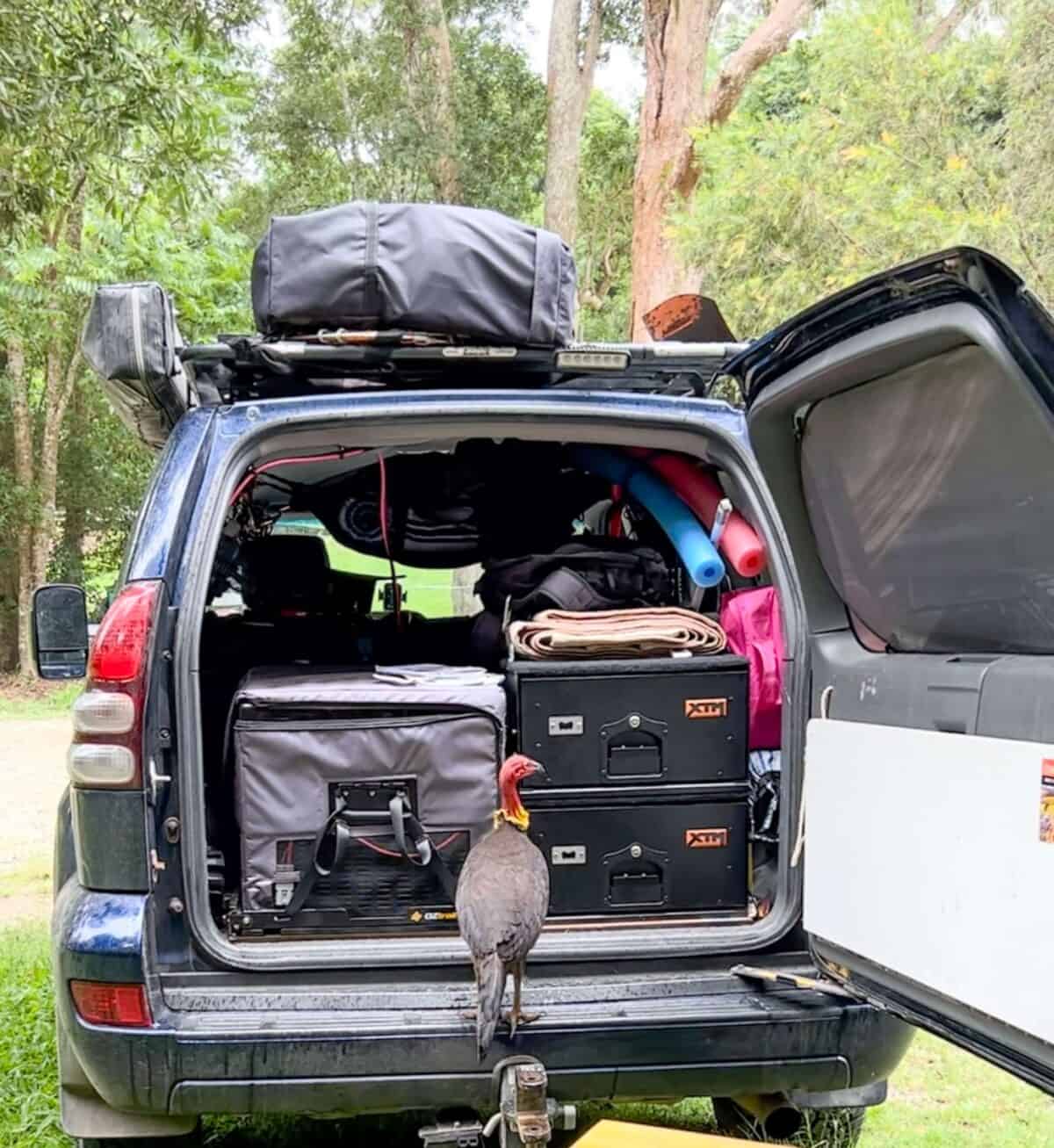
7. Towing Mirrors
If you’re not towing this isn’t necessary for you, for us it is.
These towing mirrors are great with no need to “clip on” and the ability to extend the mirrors when the trailer is attached.
Even when not towing I still prefer seeing the whole lane behind me and the next 2 over.
Yes our car looks like it has dumbo ears, yes i can see you laughing 2 lanes over, no i don’t mind.
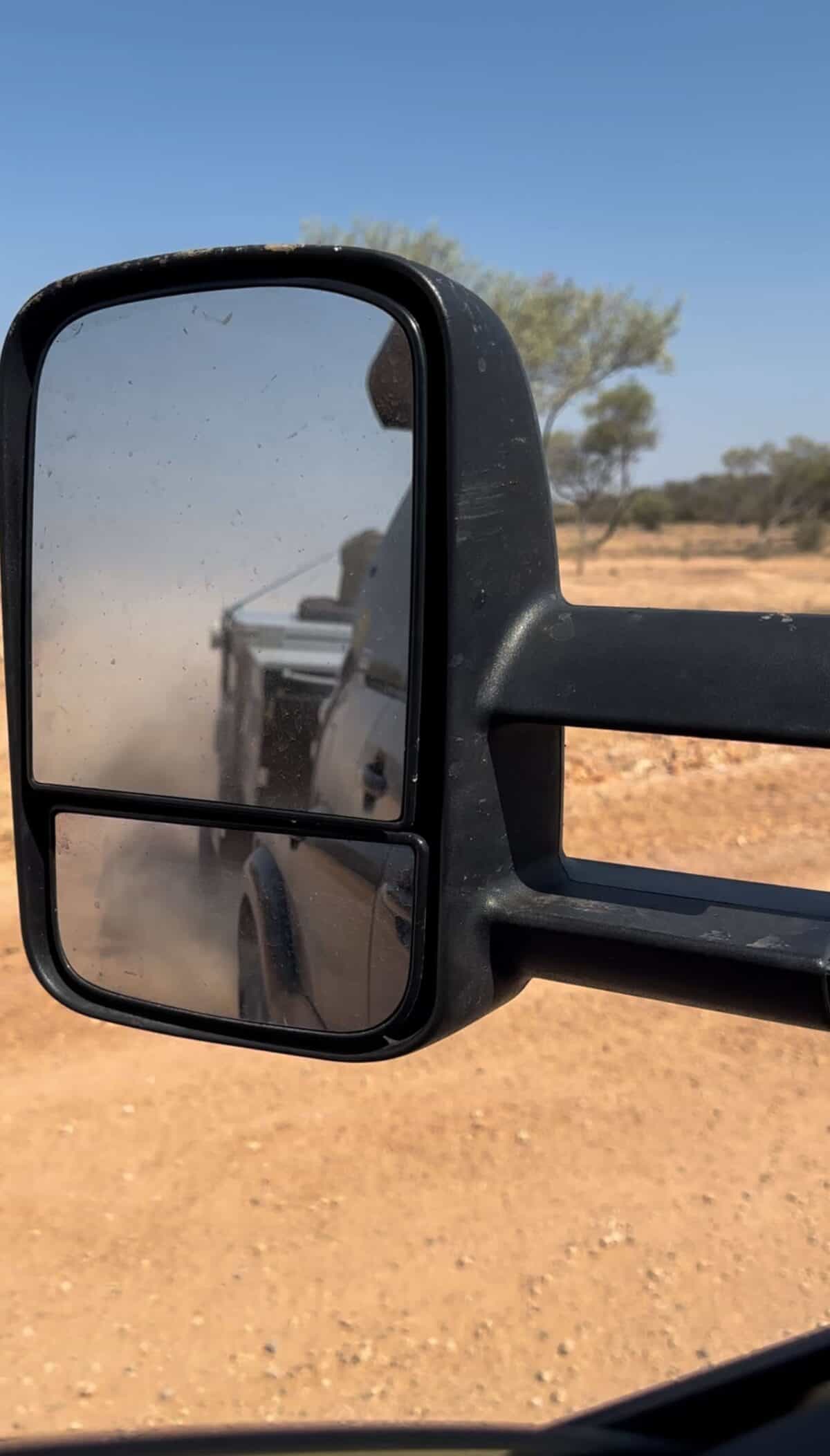
8. Spotlights
Although we don’t do much night driving for safety, when we do its daylight for us baby!
We have 4 huge spotties on the roof ensuring it doesn’t matter if there is no street lights or moonlight we can still see plenty good enough and for a long distance.
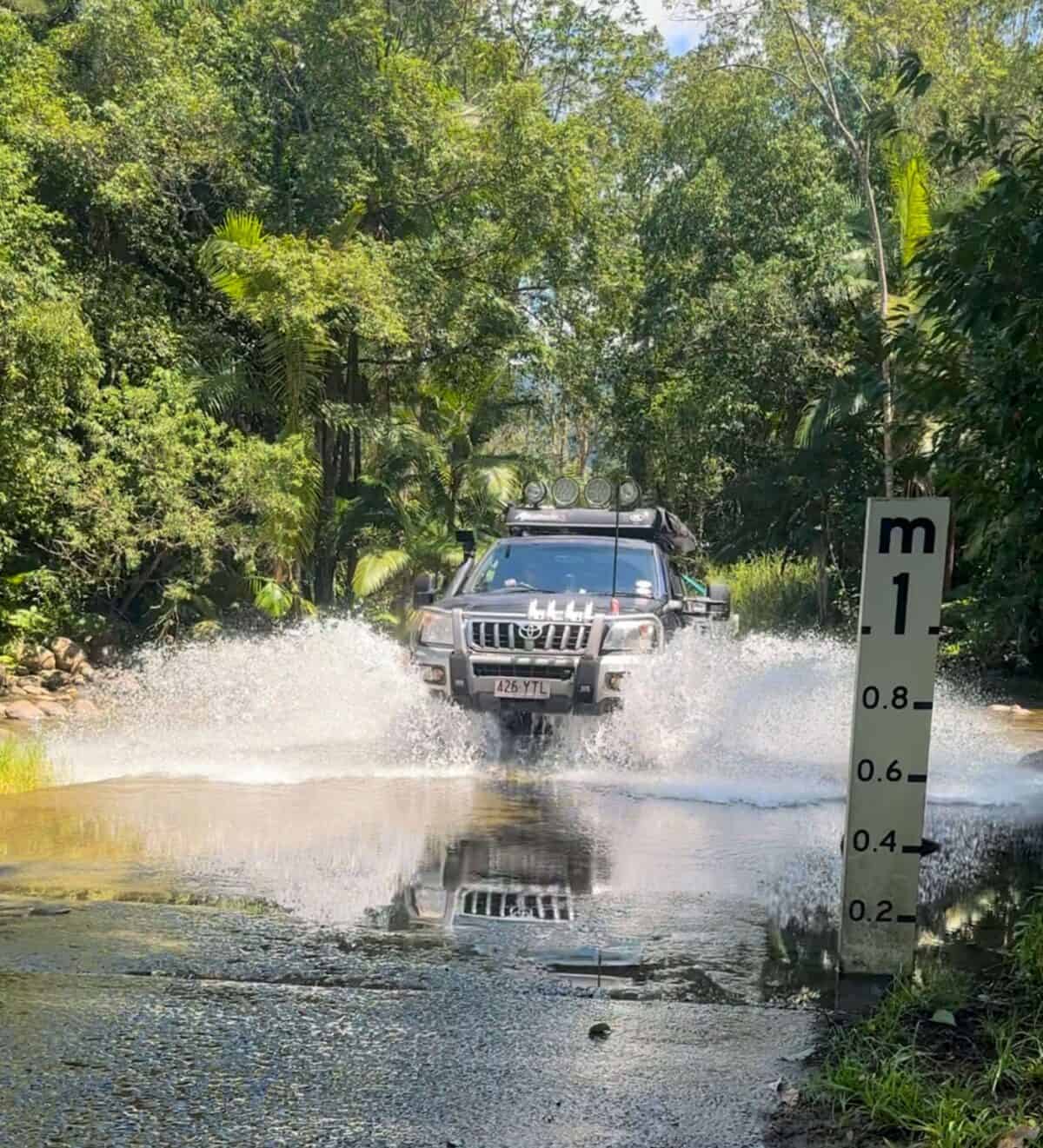
9. Book A Major Service (even if it’s not due)
If you have a new car this might not be a need for you.
I do think a full “from the wheel studs up” once over by a trusted mechanic (or someone very mechanically knowledgeable) is a must.
The last thing you want is to find out your sway bar links are shagged in the middle of nowhere and it now costs triple to get new ones let alone the down time waiting.
Or like us on a trip to K’Gari/Fraser Island before our lap of Australia with a busted turbo actuator.
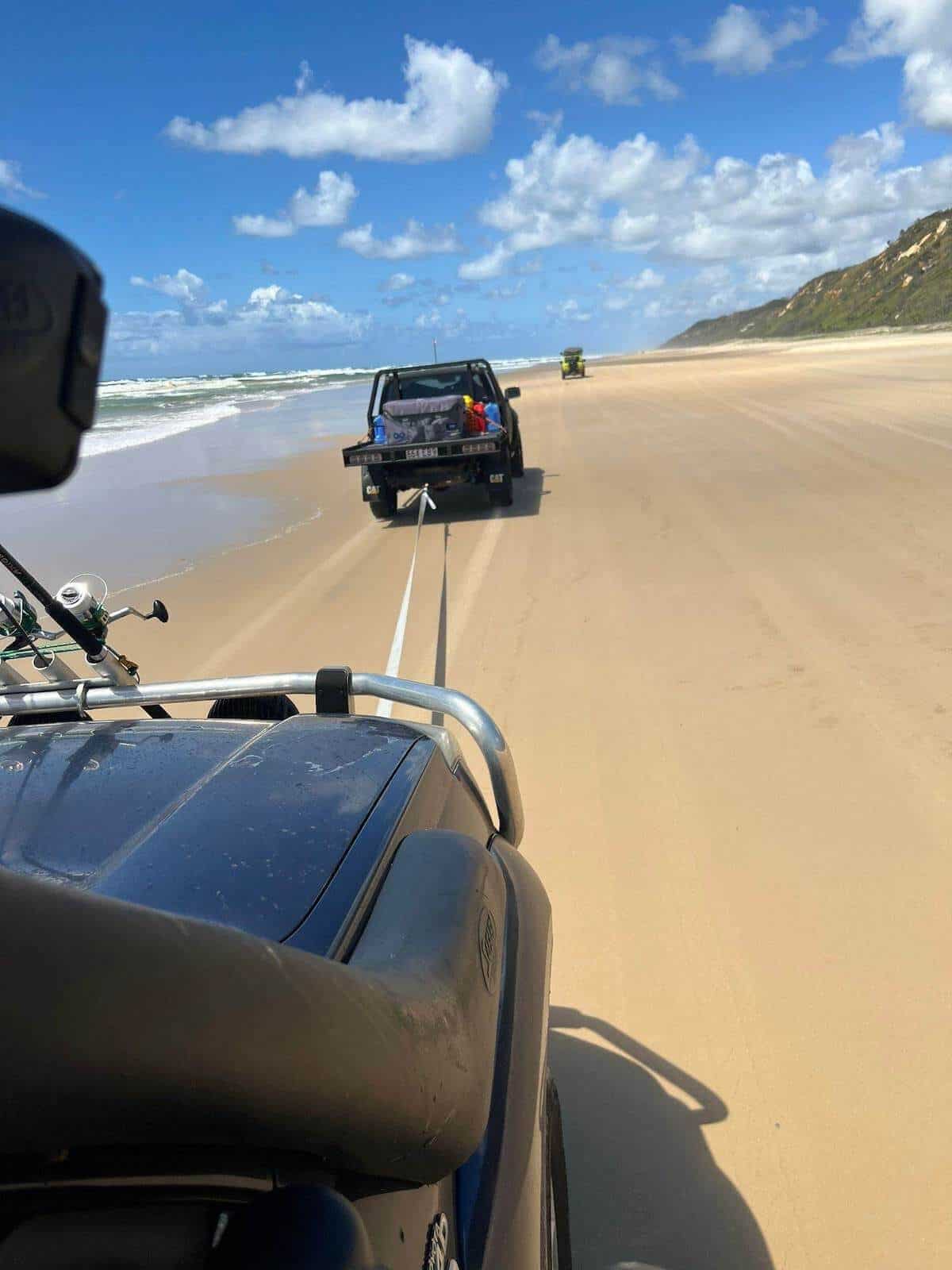
10. Car Winch
We couldn’t end up getting one due to weight, but if we had the spare weight I would have one without fail.
So far we have been bogged once, and been able to get out with the max tracks, shovel and 3 hours digging. This would have been much easier and quicker if we just hooked a winch up to a tree and winched away.
Maybe not a necessity for those not going off the beaten track but for those who are they will probably agree with this.
Don’t forget to check weights when picking a winch.
11. Under Body Protective Coating
If you don’t like beach or off-the-beaten-track camping, this won’t be a must for you.
As we enjoy waking up on the beach we decided to get the under-body protective coating to both the car and trailer to avoid rust.
This doesn’t mean we don’t have to wash our underbody after driving the beach highway, it just means we have a safety net.
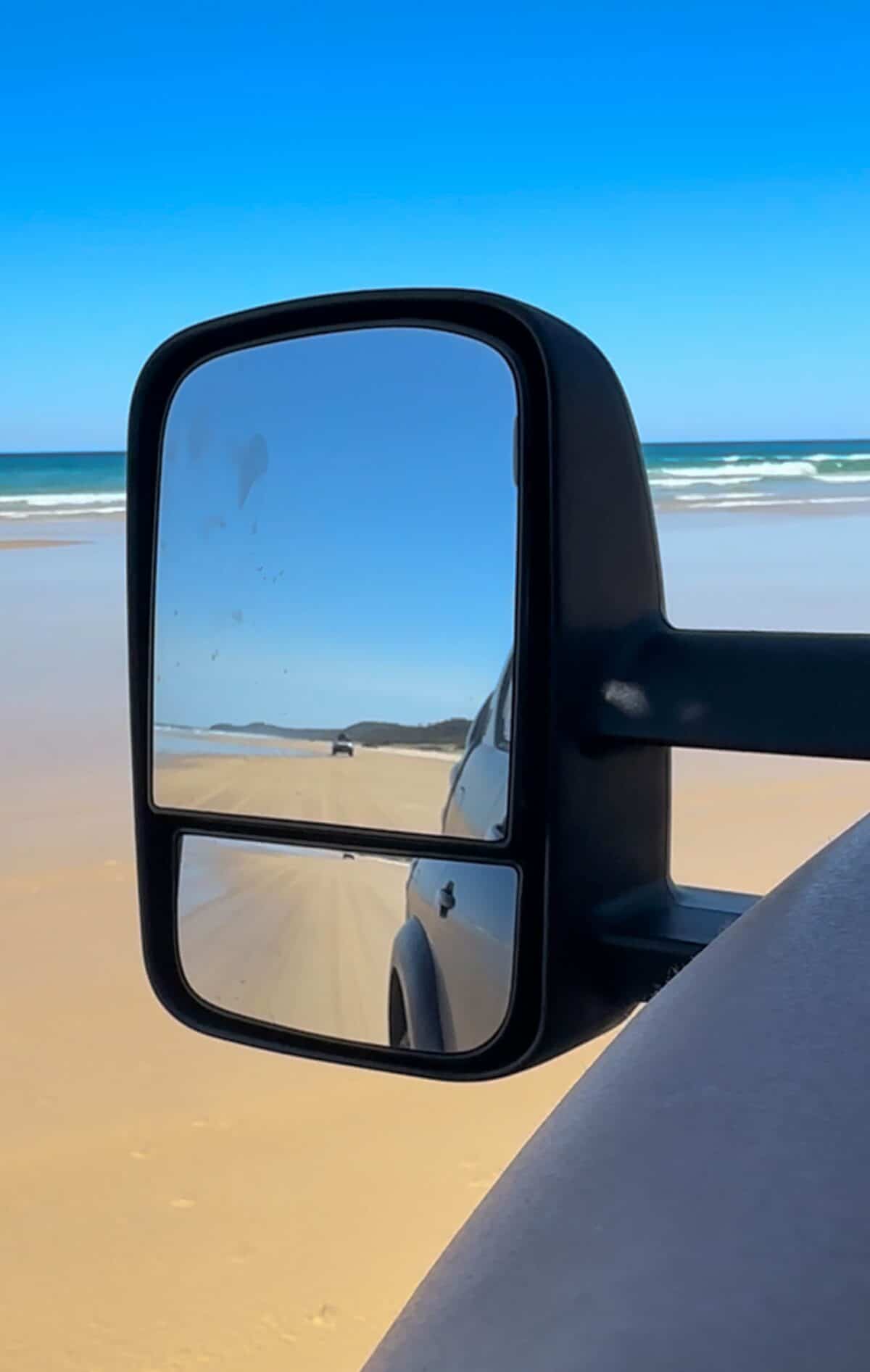
12. Reverse Camera
This is a pretty self-explaining one.
With the trailer on, backing into tight spaces can be an art. We’re pretty good at this now but a helping hand/second spotter is always welcome.
For us, a reserving camera is on the must-have vehicle upgrades list.
13. Electric Brakes
If you are towing anything bigger than a carton of beer, you will legally need electric brakes installed. The majority of cars can only tow 750KG without electric brakes.
As our trailer is well above this, we installed a redarc electric tow brake system. This gives us the piece of mind that we were both legal on the road and downhill braking is so much easier.
Without them, you really feel your tow load pushing you when braking, whereas with the brakes installed, your load slows itself down.
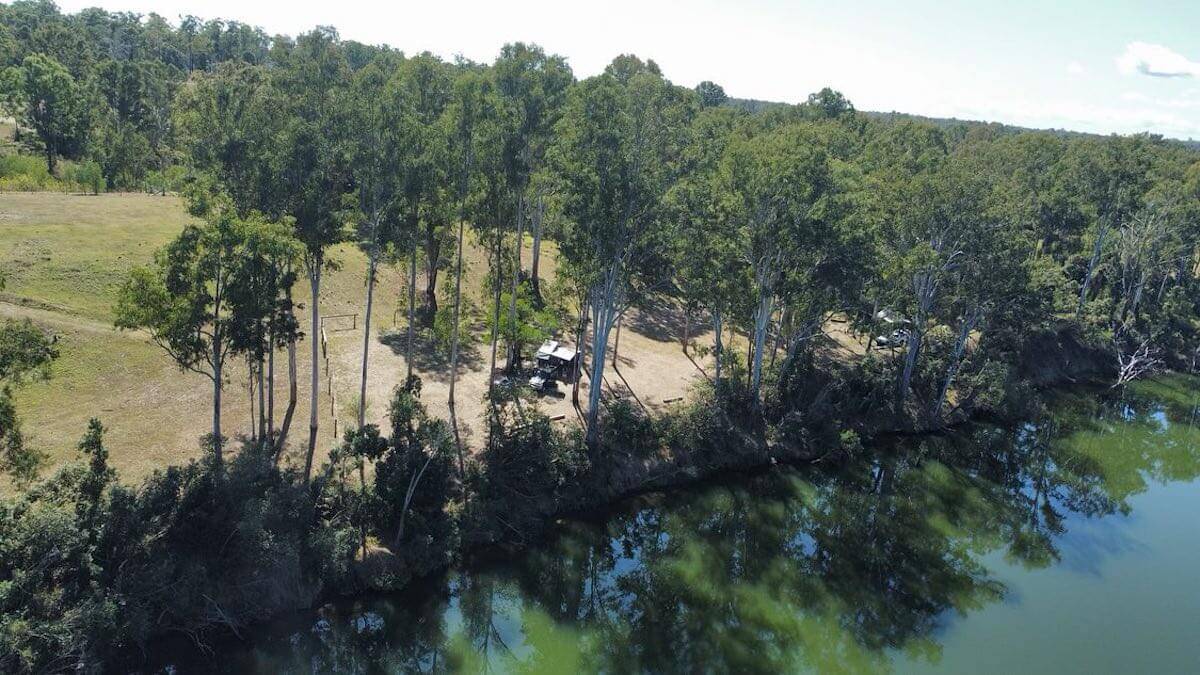
14. Performance Tune
As we are towing a good chunk of weight, we knew hills and ranges would be a bit of a struggle. We wanted the car to perform as close to normal whilst towing.
For this reason, we decided on a performance tune designed for towing. This gives us the up-and-go we need when the trailer is attached to tackle the hills.
It’s not a huge amount of added power but it is enough to make places like the Eungella range a little bit more tolerable.
15. UHF Radio
This was a safety must for us.
From talking to the truckies in regards to overtaking and hazards on the road to the just in case we get stuck and need a hand this cheap little mod is well worth it.
The countless times we have seen a fellow traveller with something dangling or not secured away properly and managed to make contact to save the awning has made it worth it alone.
When trucks or other cars want to overtake when we are cruising at 90 km/h, we just grab the handpiece and let them know when it’s clear to rip past. This puts you at ease by not having a convoy of cars wanting to be free behind you and also stops some of the road rage.
Simply letting them know “I’ll let ya know when it’s clear to go for it mate” as someone comes in close, usually gets a better response than making them push out wide to see around the trailer.
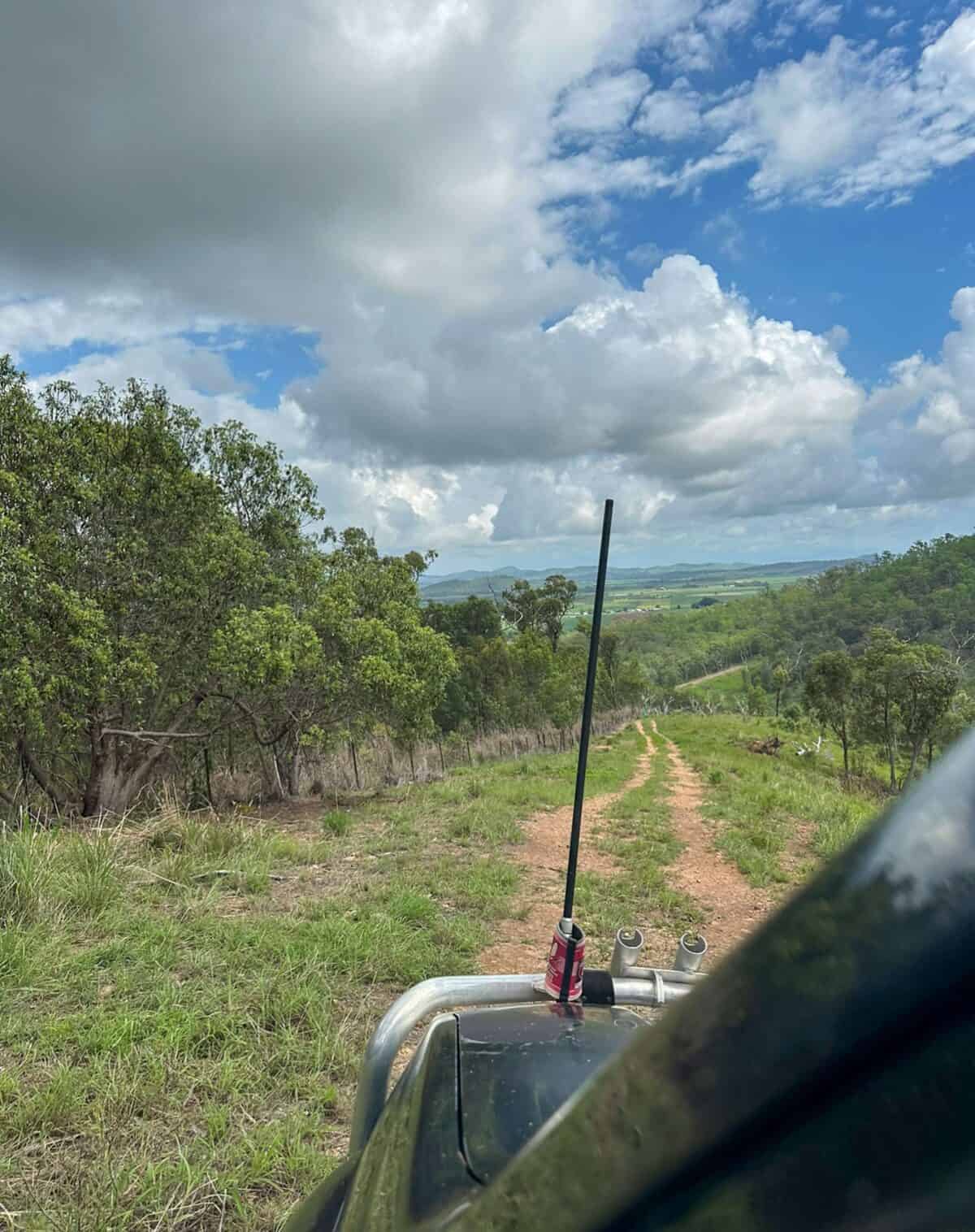
16. A Second Fuel Filter
When we had all the choices in the world at home, BP was always our first pick. When full-time travel in Australia is your life, you don’t always get the juice you want.
We generally use our fuel apps to search the fuel prices in the area, and when you’re travelling more remote you have absolutely no option but to use the small independent servo.
This means you are more likely to pick up dirty fuel.
A mechanic recommended the use of “Fuel Doctor” to avoid blowing smoke, which we add to the fuel tank roughly every second tank. An additional precaution is the second fuel filter.
Conclusion
To sum it all up, there are hundreds of mods and add-on bits you can add to your car. Every second person will have a different opinion of what is needed for must-have vehicle upgrades. This list is ours.
What we consider a must-have will also probably change as time goes on and things break or new gear/tech comes out so take this with a grain of salt and change it to suit your setup and needs.
Hooroo.

